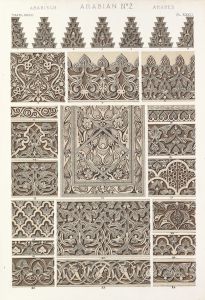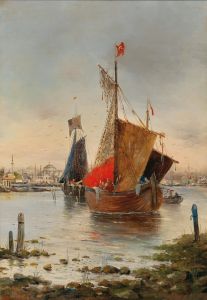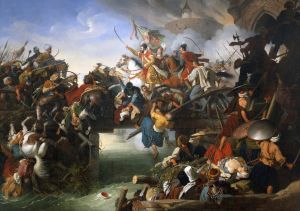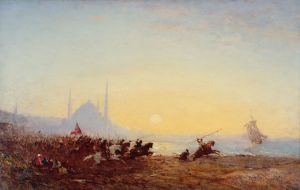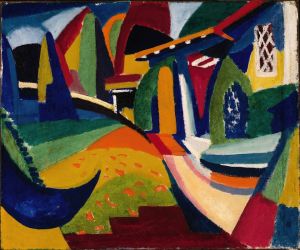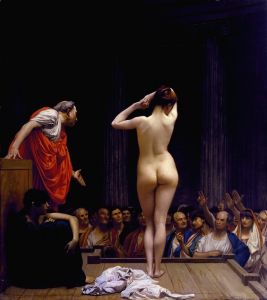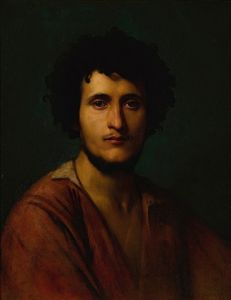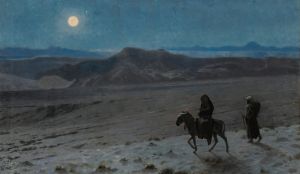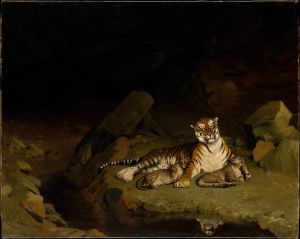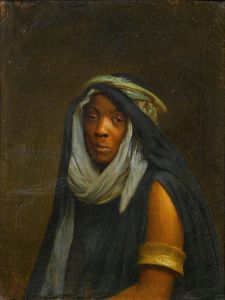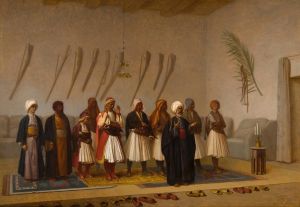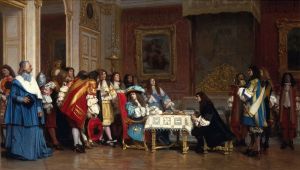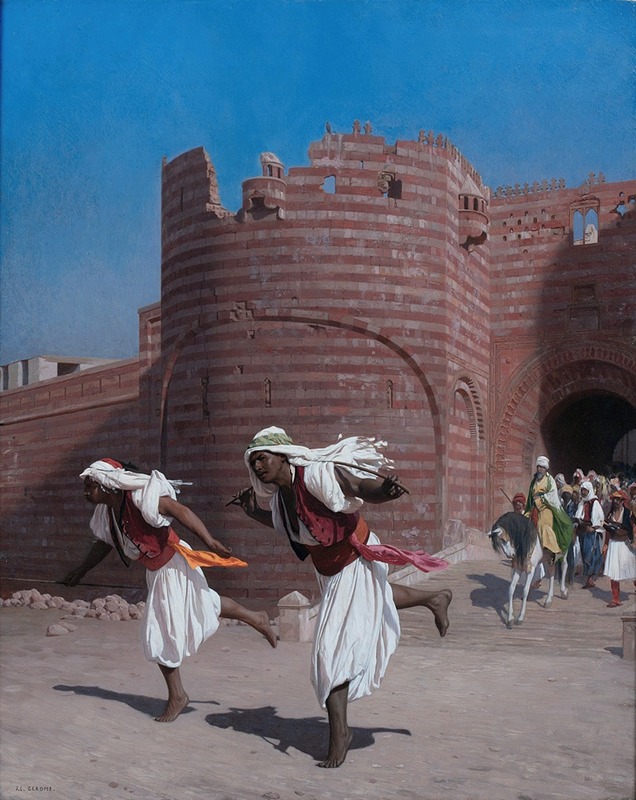
The runners of the Pasha
A hand-painted replica of Jean-Léon Gérôme’s masterpiece The runners of the Pasha, meticulously crafted by professional artists to capture the true essence of the original. Each piece is created with museum-quality canvas and rare mineral pigments, carefully painted by experienced artists with delicate brushstrokes and rich, layered colors to perfectly recreate the texture of the original artwork. Unlike machine-printed reproductions, this hand-painted version brings the painting to life, infused with the artist’s emotions and skill in every stroke. Whether for personal collection or home decoration, it instantly elevates the artistic atmosphere of any space.
Jean-Léon Gérôme was a prominent 19th-century French painter and sculptor, known for his detailed and historically themed works. One of his notable paintings is "The Runners of the Pasha," which exemplifies his interest in Orientalism—a genre that depicted the Middle East, North Africa, and Asia through a Western lens. Gérôme's works often combined classical themes with contemporary subjects, and he was renowned for his meticulous attention to detail and vibrant use of color.
"The Runners of the Pasha" is a painting that captures a scene from the Ottoman Empire, reflecting Gérôme's fascination with the exotic and the opulent lifestyles of the East as perceived by Western audiences of his time. The painting portrays a group of runners, who were traditionally employed by high-ranking officials or nobility in the Ottoman Empire to deliver messages or clear the way for their masters. These runners were known for their speed and endurance, and they played a significant role in the communication and transportation systems of the time.
In the painting, Gérôme depicts the runners in a dynamic composition, emphasizing their movement and energy. The setting is likely a street or a courtyard, with architectural elements that suggest an Eastern locale. Gérôme's attention to detail is evident in the intricate costumes of the runners, which are richly colored and adorned, reflecting the luxurious fabrics and styles of the period. The painting captures the essence of the runners' role and the cultural context in which they operated.
Gérôme's work is often associated with the Orientalist movement, which was characterized by Western artists' depictions of Eastern subjects. This movement was both popular and controversial, as it often romanticized or stereotyped Eastern cultures. Gérôme, however, was praised for his technical skill and his ability to bring scenes to life with authenticity and vibrancy. His paintings were based on extensive travels and studies, which lent a degree of accuracy to his depictions, although they still reflected the biases and perspectives of his time.
"The Runners of the Pasha" is a testament to Gérôme's ability to capture the spirit of a culture and a moment in time. It reflects his interest in the human figure and movement, as well as his fascination with the exotic. The painting is a part of Gérôme's broader body of work that explores themes of power, culture, and the intersection of East and West.
Gérôme's influence extended beyond his paintings; he was also a respected teacher at the École des Beaux-Arts in Paris, where he mentored many young artists. His works continue to be studied and appreciated for their artistic merit and their role in the history of art. "The Runners of the Pasha" remains a significant piece within Gérôme's oeuvre, illustrating his mastery of composition and his enduring interest in the diverse cultures of the world.





